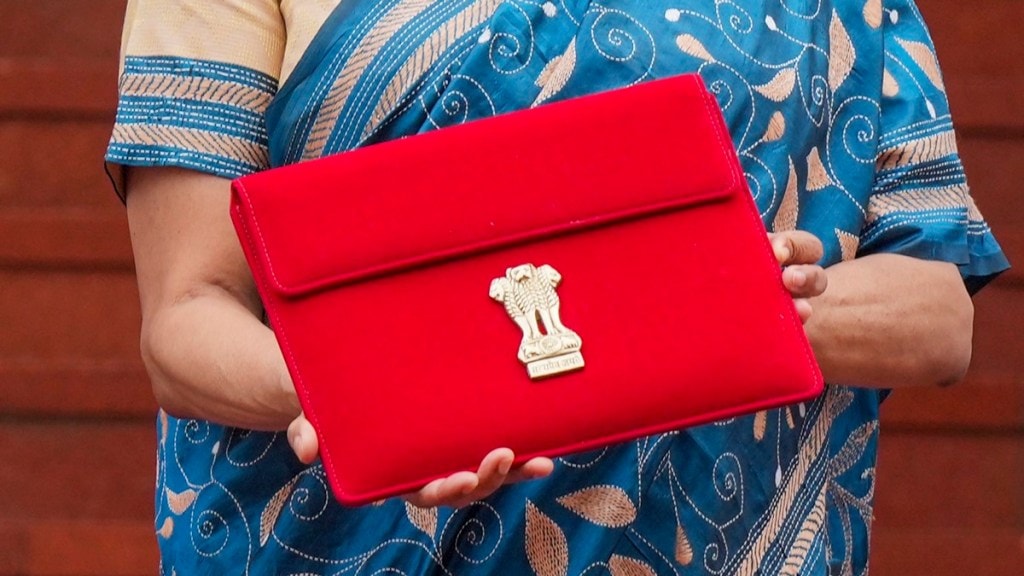Restraint seems to be Nirmala Sitharaman’s middle name. That was validated by a realistic interim Budget for 2024-25, which, despite its fair share of political rhetoric, stood out for its commitment to fiscal prudence as well as the continued thrust on capital expenditure. The finance minister outlined some plans that will benefit primarily the middle class, youth, and the rural population, but some of these are extensions of existing schemes and modest in their scale. Ostensibly with a view to addressing the stress in the rural economy, the aggregate outlay on four key schemes—MGNREGS, PMAY-Grameen, PMGSY and PM-Kisan—has been raised by a reasonable 13.2% on the back of a 10% fall in each of the two previous years. There is also a jump in the outlay for food storage and warehousing.
But there were no immediate giveaways either in the form of income transfers or more free foodgrains and no attempts to put more money in people’s hands by way of income tax cuts. In fact, the food subsidy bill has been pruned slightly to Rs 2.05 trillion from Rs 2.21 trillion. Indeed, the National Democratic Alliance’s (NDA’s) decision to not offer any freebies or sops ahead of the general elections speaks volumes about how confident it is about returning to power.
Meanwhile, the finance minister has targeted a much smaller fiscal deficit target of 5.1% of GDP, down from 5.8% in the current year—helped by an economy that’s growing at 7%, and buoyant tax collections. In reality though, there could be room to spend more than the budgeted amount because the nominal GDP growth assumption of 10.5%, although much higher than the 8.9% for the current year, is somewhat conservative. The numbers will cheer Mint Street, which hasn’t yet been able to rein in inflation to the extent it would have liked. The smaller market borrowings, projected at Rs 11.75 trillion, helped by the cushion from the GST compensation cess, should drive down bond yields. On Thursday, the benchmark yield closed at 7.05%. If sustained, it would lower the government’s interest bill—current debt servicing costs account for a large share of revenues.
Importantly, it will give the Reserve Bank of India (RBI) much-needed wiggle room on rate action. The lower bond yields should translate into a lower cost of capital and crowd in private sector borrowings. In fact, should the investments into bonds by foreign portfolio investors courtesy the index inclusion (currently estimated at $20- $25 billion) come through as anticipated in June, banks would probably be left with surpluses. That could compel them to step up lending as they search for better yields from borrowers. An upgrade from the ratings agencies would come as an additional boost for companies as it would lower borrowing costs overseas.
It is important, even critical, that the private sector steps in to invest more meaningfully. While the allocation for capex in the interim Budget is bigger by 11% on a high base, it needs to be supplemented. Else, the economy, which has been largely sustained by government capex rather than any meaningful improvement in consumer demand could lose momentum. In this context, it is somewhat surprising that the 15% concessional rate of corporation tax will no longer be available for new units, though there is nothing that stops the government from reintroducing it in the full-fledged Budget.
The government’s balance sheet is targeted to expand at a little over 6% in the current year—a modest increase. The Centre’s net tax revenue targets too are not ambitious and bake in a growth of 11.9% at a much lower but realistic buoyancy of just 1.1%. In the current year, tax revenues are estimated to grow at nearly 11% at a much higher buoyancy of 1.4. These would be supported by non-tax revenues, though the government could work harder on disinvestments, where it has repeatedly missed its very modest targets. It is welcome that the Centre plans to encourage states to spend on tourism and other areas by offering them long-term loans at zero or soft interest rates.
Disappointingly, the outlay for health at 0.28% of GDP is smaller than in the previous two years; at 0.38% of GDP, even the education budget is not large enough. If the government believes it is short on resources, it must come up with incentives to encourage the private sector to spend in these areas. The defence budget allocation at 1.39% of GDP is the smallest in four years but would probably see an increase in July. Overall, the interim Budget is a reflection of the government’s confidence with continuity.

